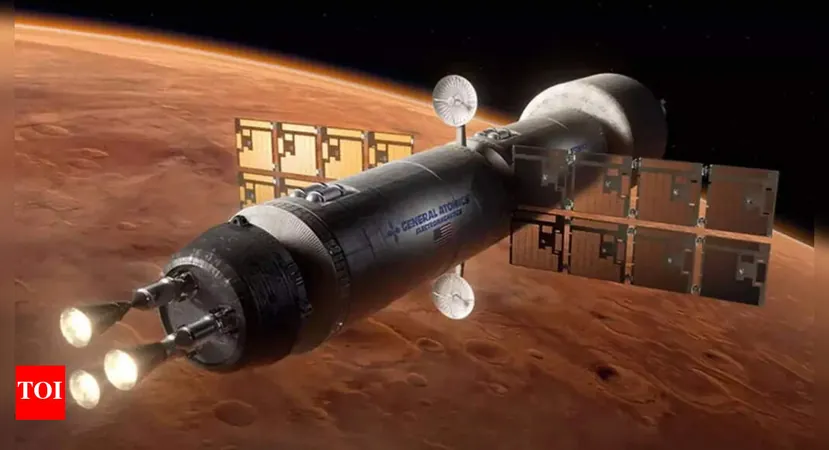
Breakthrough in Space Travel: Nuclear-Powered Rockets Could Halve Mars Journey Time!
2025-04-05
Author: John Tan
A Revolutionary Leap in Space Travel
A revolutionary leap in space travel is on the horizon as British company Pulsar Fusion announces its ambitious plan to develop the Sunbird, a cutting-edge rocket powered by nuclear fusion. This innovative technology, known as the Dual Direct Fusion Drive (DDFD), promises to drastically shorten journey times to distant planets. Reports suggest that the Sunbird could reduce the time it takes to reach Mars by 50%, making a voyage to the Red Planet possible in just over three months. Furthermore, the rocket could reach Pluto in a mere four years, a remarkable improvement over current spacecraft travel durations.
The Dawn of a New Era in Space Exploration
Pulsar Fusion's project could undoubtedly catalyze a commercial space revolution. By harnessing the same nuclear fusion processes that fuel our Sun, the Sunbird aims to push the boundaries of what we know about human travel in space. The potential applications of this technology extend far beyond Mars and Pluto; it could potentially open the door to more frequent and affordable interplanetary missions, propelling humanity into a bold new era of exploration.
Why Nuclear Fusion?
Nuclear fusion, often touted as the "holy grail" of energy sources, has been a long-held vision for powering spacecraft. Yet, achieving practical fusion energy on Earth has proved elusive. Richard Dinan, CEO of Pulsar Fusion, emphasizes that space provides an ideal environment for fusion, where natural conditions support the process. Unlike existing fusion reactors on Earth, the DDFD generates propulsion using charged particles directly, thereby enhancing efficiency and thrust effectiveness.
A Game-Changer for Space Missions
The implications of Pulsar's technology are nothing short of astounding. The Sunbird could be a game-changer for long-duration human missions, significantly reducing the time astronauts need to spend in transit. With quicker travel to Mars, missions could focus on scientific exploration rather than logistics, opening up new possibilities for research and discovery.
However, there remains a caveat: while the goals set by Pulsar Fusion are ambitious, practical experiments with fusion technology in space have yet to be conducted. Thus, achieving these milestones by the target date of 2027 will require overcoming numerous engineering and technical challenges.
The Future of Space Travel
Pulsar Fusion envisions a future where rockets like the Sunbird could revolutionize how we transport not only people but also cargo across space. Initially, these powerful rockets could be used to aid cargo transport in low-Earth orbit, paving the way for more efficient supply chains in space. In the long term, however, their greatest promise lies in unleashing human potential for exploration beyond Earth.
As we stand on the precipice of this technological breakthrough, the possibility of rapid space travel becomes not just a scientific dream but a potential reality that may redefine our existence in the cosmos. Could humanity soon embark on interplanetary journeys at unprecedented speeds? Only time will tell if Pulsar Fusion's vision becomes a shining reality, leading us to the stars!
Stay tuned for updates on this exciting development in space technology and what it means for humanity's future in the universe!





 Brasil (PT)
Brasil (PT)
 Canada (EN)
Canada (EN)
 Chile (ES)
Chile (ES)
 Česko (CS)
Česko (CS)
 대한민국 (KO)
대한민국 (KO)
 España (ES)
España (ES)
 France (FR)
France (FR)
 Hong Kong (EN)
Hong Kong (EN)
 Italia (IT)
Italia (IT)
 日本 (JA)
日本 (JA)
 Magyarország (HU)
Magyarország (HU)
 Norge (NO)
Norge (NO)
 Polska (PL)
Polska (PL)
 Schweiz (DE)
Schweiz (DE)
 Singapore (EN)
Singapore (EN)
 Sverige (SV)
Sverige (SV)
 Suomi (FI)
Suomi (FI)
 Türkiye (TR)
Türkiye (TR)
 الإمارات العربية المتحدة (AR)
الإمارات العربية المتحدة (AR)